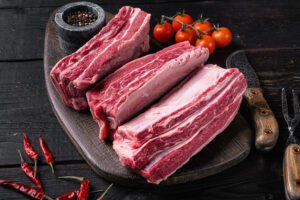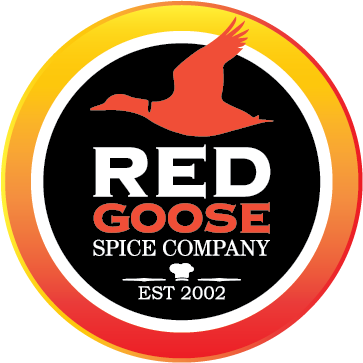Call it stew or call it a pot roast, either way, the method used to cook this delicious entrée is called braising.
This simple cooking method has been around for centuries and has been adapted by many cultures to prepare some of their signature dishes such as; Beef Burgundy / Bourguignonne in France, Irish Stew, Carne Guisada in Spain and the Caribbean, and Birria in Mexico, just to name a few.
One thing that they all have in common, is that it uses “less tender” cuts of meat and “tenderizes” them by cooking with long, slow moist heat.
Often, a broth and vegetables are added for additional color, flavor and texture.
The distinction between a stew and pot roast is pretty blurred.
About the only “real” differences between these 2 dishes are that a stew uses smaller pieces of meat (usually 1 to 2 inches) versus a pot roast which uses a larger, 1 to 3 pound (or more) whole piece of meat.
The other difference is that stews generally use quite a bit more liquid, resulting in a finished dish that’s pretty much a hearty soup.
Whichever variation you prefer, the basic outcome is that this long, slow, moist cooking method slowly breaks down the connective tissues and collagen in the meat, resulting not only in a tender dish, but a delicious broth which you can thicken at the end.
A poor man’s meal? Not at all.
While stews and pot roasts were often thought of as a “working class” meal, this cooking method has recently been resurrected by some of the world’s most famous Chefs and versions of it have appeared on their very expensive menus to rave reviews.
Braising basics.
Braising is easy, but the success of its outcome is dependent on a few important things, the most important being the cut of meat you start with.
The most commonly braised meats are beef and veal. And the most popular cuts come from the Chuck, Bottom Round, Brisket, Flank, Short Ribs and Shank (Veal).

Many people are surprised that the worst cuts of meat for braising are actually the most expensive and tender ones.
Cuts such as the rib, loin & tenderloin are very poor choices for braising.
Why?
First of all, they’re already tender so there is no reason to braise them.
Second, their muscle fiber is so fine, braising would only turn them into a shredded “beef spaghetti”.
Lastly, quite honestly, the less tender cuts have more flavor.
One of THE most popular cuts of beef for braising is short ribs. Ones that are both meaty and well marbled with evenly specs of fat throughout the meat.

There are so many recipes used in braising that we could go on forever with recipes that use wine, beer, sake, cider, tomato puree and fruit juices such as pineapple and cherry.
They’re all excellent in their own right.
Today, we’d like to share with you a braised beef recipe that’s one of our favorites.
You may like it SO much that you’ll be tempted to make a large batch of this recipe and freeze (yes freeze) portions of the braised beef, together with some of the sauce, so I can enjoy it more often.
What makes memorable short ribs?
Here’s are some criteria:
- Choose the right ribs. Meaty but with great specks of fat marbling throughout. Not too fatty, not too much bone.
- Ideally cut about 2” thick.
- Seared in hot oil on all sides until well caramelized to develop good color and flavor.
- Cooked in a VERY flavorful liquids, whether stock, wine or other. More about that later.
- Cooked VERY slowly (basically poached) over a long period of time (3 hours minimum) until the meat is falling off the bone tender, but not entirely “bleached” of all of its fat and natural beef flavor.
- Served with a sauce (made from the cooking liquid) that’s not too thick and seasoned just ever so slightly. It should be medium-dark in color, and almost “sticky” to the lips coming from the gelatin that’s naturally in the rib bones. And lastly, so savory, that you’ll enjoy it as much as the ribs themselves.
If you follow these basic guidelines, it will result in ribs that are neither dry, stringy or chewy.
Contrary to the usual rule of thumb that less tender cuts of meat are less expensive, pound per pound, short ribs (once braised and removed from the bone), are actually more expensive to make than beef tenderloin.
That alone will definitely change your notion of short ribs being a poor man’s meal!
Have we got a GREAT braising recipe for you!
Before you make this recipe, keep in mind that you really should have a heavy-gauged saucepot to sear, then to cook your beef ribs in.
It should also have a rather tight-fitting lid.
Second, while you CAN use a pressure cooker to shorten the cooking time, we prefer the longer, slower cooking method of braising in a covered pot, not a pressure cooker. This will develop more flavors in the sauce, and maintain the integrity of the meat shapes.
For the recipe below, here are a few additional tips:
- Purchase a low-sodium soy sauce if possible.
- Kitchen Basics brand beef stock works well.
- Cut your veggies into large 1” pieces. Cutting them smaller will allow too much vegetable flavor into the sauce.
- Any honey will do.
Soy & Honey Braised Short Ribs
Serves 3 to 4 persons
4 pounds beef short ribs
2 tablespoons vegetable oil
1 cup white onion, cut 1” dice
½ cup carrot, cut 1” dice
½ cup celery, cut 1″ dice
1 each garlic clove, chopped
1 ½ cups strong beef broth / stock
¼ cup honey
½ cup soy sauce, low sodium
2 tablespoons. Kitchen Bouquet® liquid seasoning (optional)
Pinch dry oregano, crushed
Pinch dry basil
To taste salt and pepper
1 cup rutabaga, cut in 1” pieces
1 cup carrots, cut in 1” pieces
1 cup red skin potatoes, cut in 1” pieces
As desired Roux (cook together over medium heat approximately 3 to 5 minutes) 3 tablespoons of butter with 1/3 cup all-purpose flour
- Heat oil in a heavy bottomed sauce pot, then sear the short ribs on all sides on medium high heat, until well browned. After each rib is browned, remove them from the pot and reserve them temporarily on a plate nearby.
- In that same sauce pot, sauté onions, carrots, celery and garlic for a few moments to soften, then add the reserved beef ribs back to the pot.
- Pour the beef stock, honey and soy sauce over the beef and vegetables.
- Add Kitchen Bouquet® (optional) and seasonings to the liquids and cover the pan tightly with a lid.
- Cook in a 300 F oven (covered) for three hours or until the largest piece of meat is fork tender, being careful NOT to break apart the meat pieces.
- Carefully remove meat from the cooking liquids then gently trim the meat away from the rib bones and place all the meat pieces in deep-sided service dish. Cover and keep warm.
- Strain the resulting cooking liquids back into the saucepot and add the second set of vegetables including the potatoes. Cover and simmer until those vegetables are tender, (approximately 20 to 30 minutes).
- With a skimmer or slotted spoon, remove the vegetables and add them to the reserved beef rib meat in the casserole dish.
- Skim off ALL the resulting fat from the surface of the remaining liquid and whisk in the prepared roux a little at a time, until the liquid is JUST thickened slightly.
- Strain sauce once more. Adjust the sauce’s seasonings with salt and pepper and ladle the sauce over the meat and vegetables in your casserole dish.
- Reserve additional sauce for those who would like more sauce.
- *Additionally, if you love mushrooms, sear large diced white mushrooms and serve over the ribs or stir them into the sauce.

